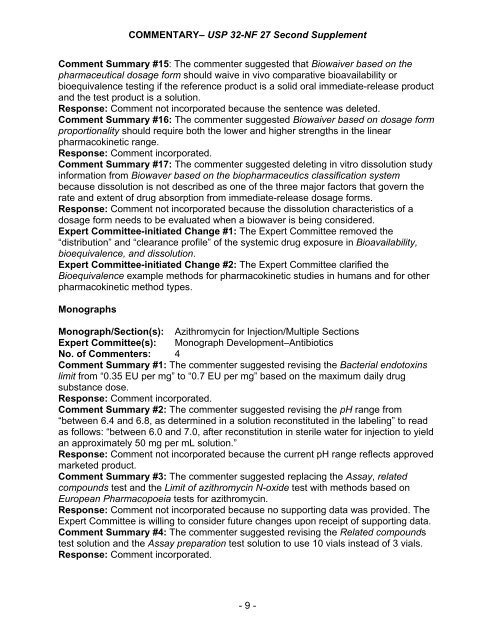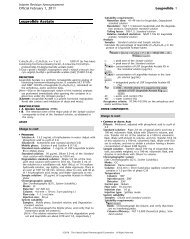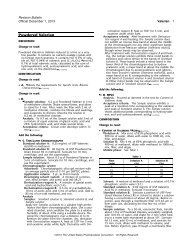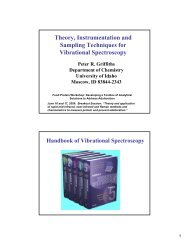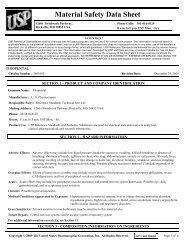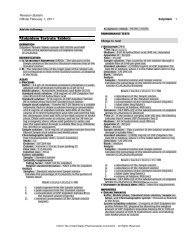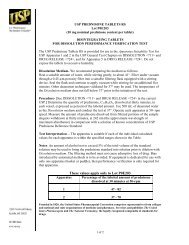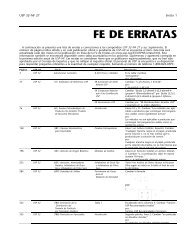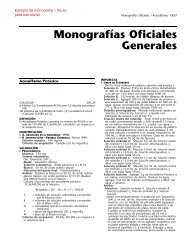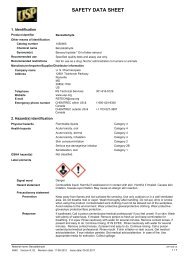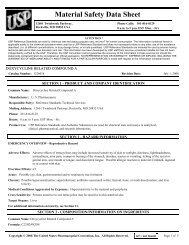COMMENTARY - US Pharmacopeial Convention
COMMENTARY - US Pharmacopeial Convention
COMMENTARY - US Pharmacopeial Convention
Create successful ePaper yourself
Turn your PDF publications into a flip-book with our unique Google optimized e-Paper software.
<strong>COMMENTARY</strong>– <strong>US</strong>P 32-NF 27 Second Supplement<br />
Comment Summary #15: The commenter suggested that Biowaiver based on the<br />
pharmaceutical dosage form should waive in vivo comparative bioavailability or<br />
bioequivalence testing if the reference product is a solid oral immediate-release product<br />
and the test product is a solution.<br />
Response: Comment not incorporated because the sentence was deleted.<br />
Comment Summary #16: The commenter suggested Biowaiver based on dosage form<br />
proportionality should require both the lower and higher strengths in the linear<br />
pharmacokinetic range.<br />
Response: Comment incorporated.<br />
Comment Summary #17: The commenter suggested deleting in vitro dissolution study<br />
information from Biowaver based on the biopharmaceutics classification system<br />
because dissolution is not described as one of the three major factors that govern the<br />
rate and extent of drug absorption from immediate-release dosage forms.<br />
Response: Comment not incorporated because the dissolution characteristics of a<br />
dosage form needs to be evaluated when a biowaver is being considered.<br />
Expert Committee-initiated Change #1: The Expert Committee removed the<br />
“distribution” and “clearance profile” of the systemic drug exposure in Bioavailability,<br />
bioequivalence, and dissolution.<br />
Expert Committee-initiated Change #2: The Expert Committee clarified the<br />
Bioequivalence example methods for pharmacokinetic studies in humans and for other<br />
pharmacokinetic method types.<br />
Monographs<br />
Monograph/Section(s): Azithromycin for Injection/Multiple Sections<br />
Expert Committee(s): Monograph Development–Antibiotics<br />
No. of Commenters: 4<br />
Comment Summary #1: The commenter suggested revising the Bacterial endotoxins<br />
limit from “0.35 EU per mg” to “0.7 EU per mg” based on the maximum daily drug<br />
substance dose.<br />
Response: Comment incorporated.<br />
Comment Summary #2: The commenter suggested revising the pH range from<br />
“between 6.4 and 6.8, as determined in a solution reconstituted in the labeling” to read<br />
as follows: “between 6.0 and 7.0, after reconstitution in sterile water for injection to yield<br />
an approximately 50 mg per mL solution.”<br />
Response: Comment not incorporated because the current pH range reflects approved<br />
marketed product.<br />
Comment Summary #3: The commenter suggested replacing the Assay, related<br />
compounds test and the Limit of azithromycin N-oxide test with methods based on<br />
European Pharmacopoeia tests for azithromycin.<br />
Response: Comment not incorporated because no supporting data was provided. The<br />
Expert Committee is willing to consider future changes upon receipt of supporting data.<br />
Comment Summary #4: The commenter suggested revising the Related compounds<br />
test solution and the Assay preparation test solution to use 10 vials instead of 3 vials.<br />
Response: Comment incorporated.<br />
- 9 -


